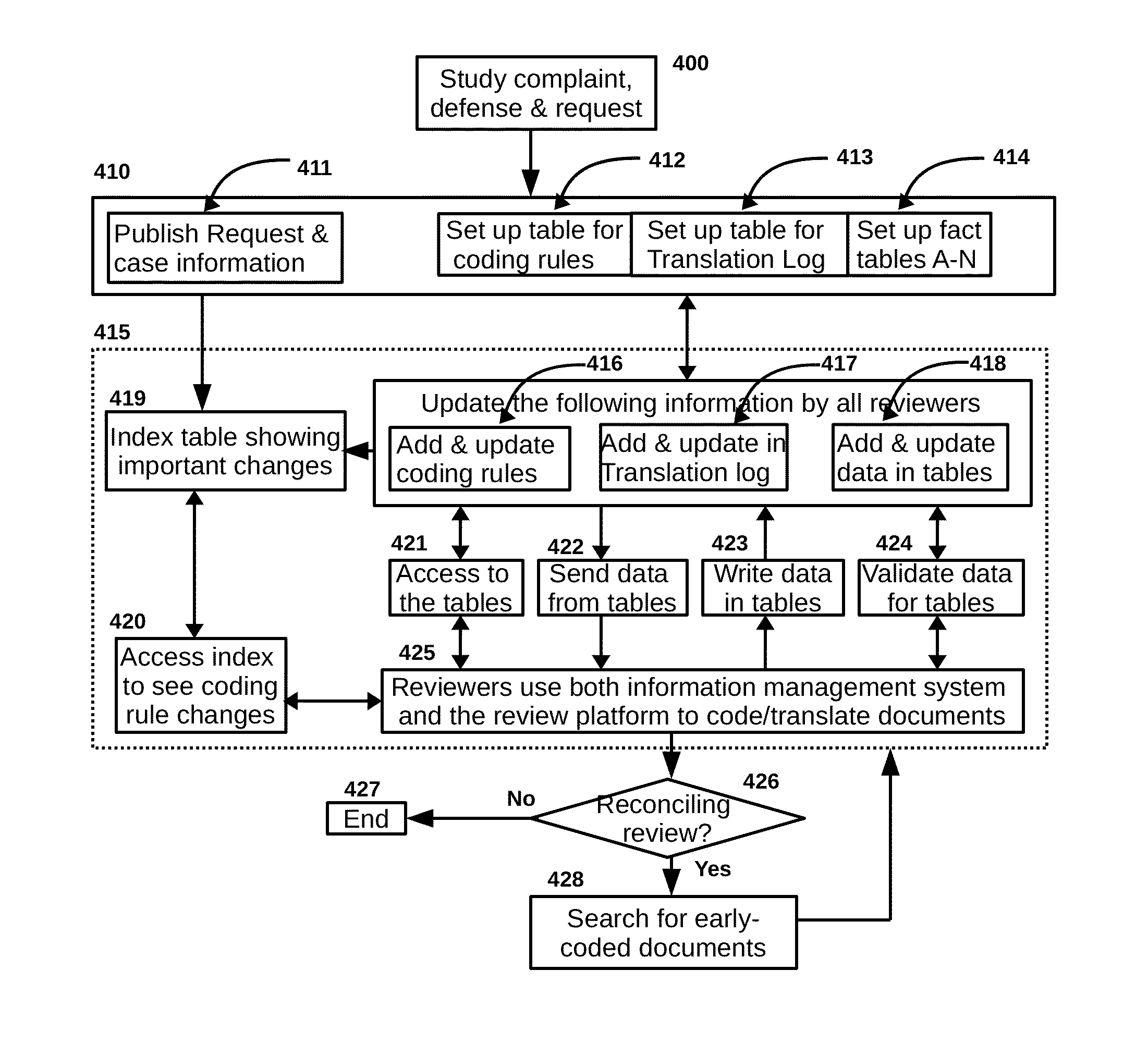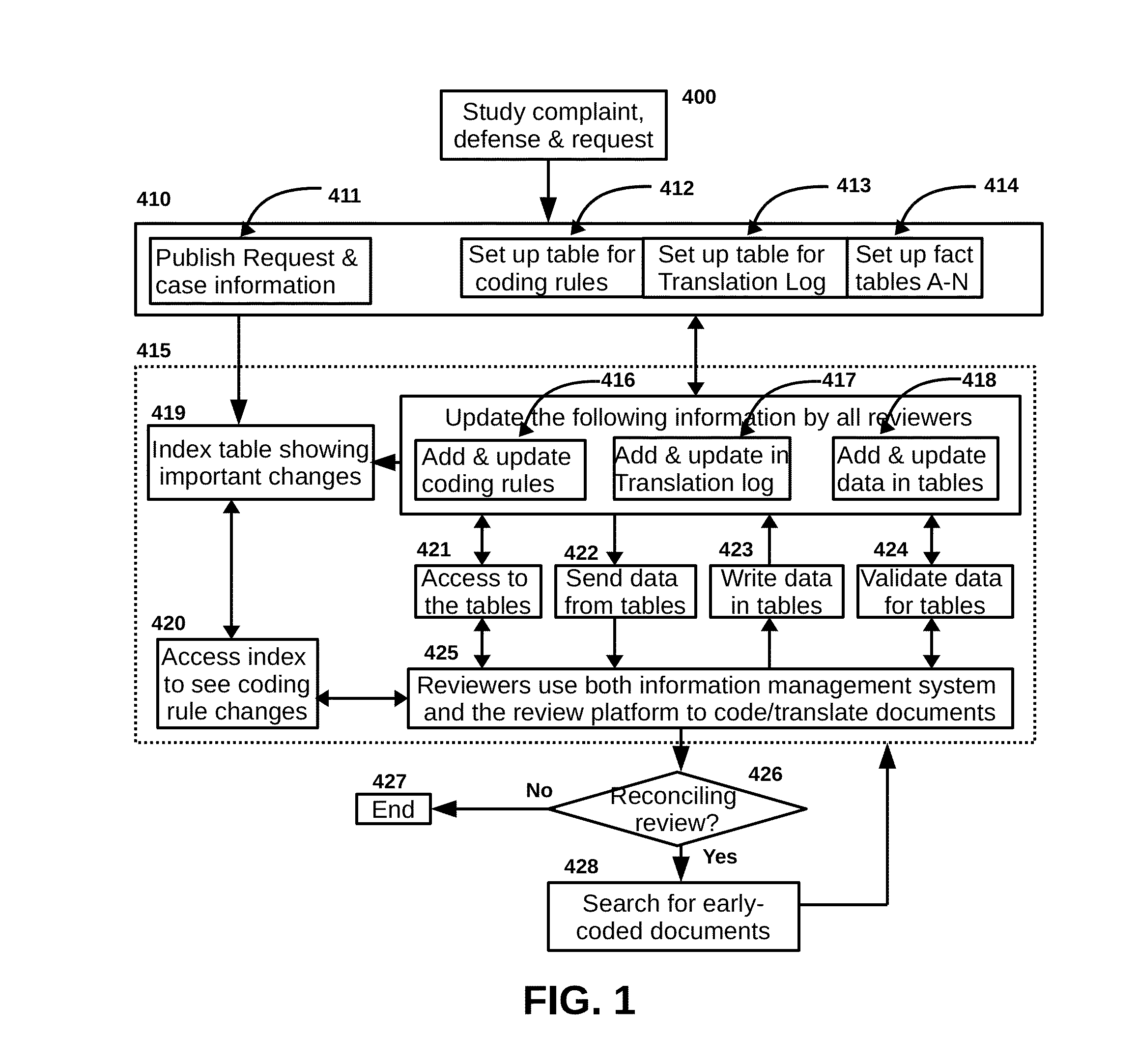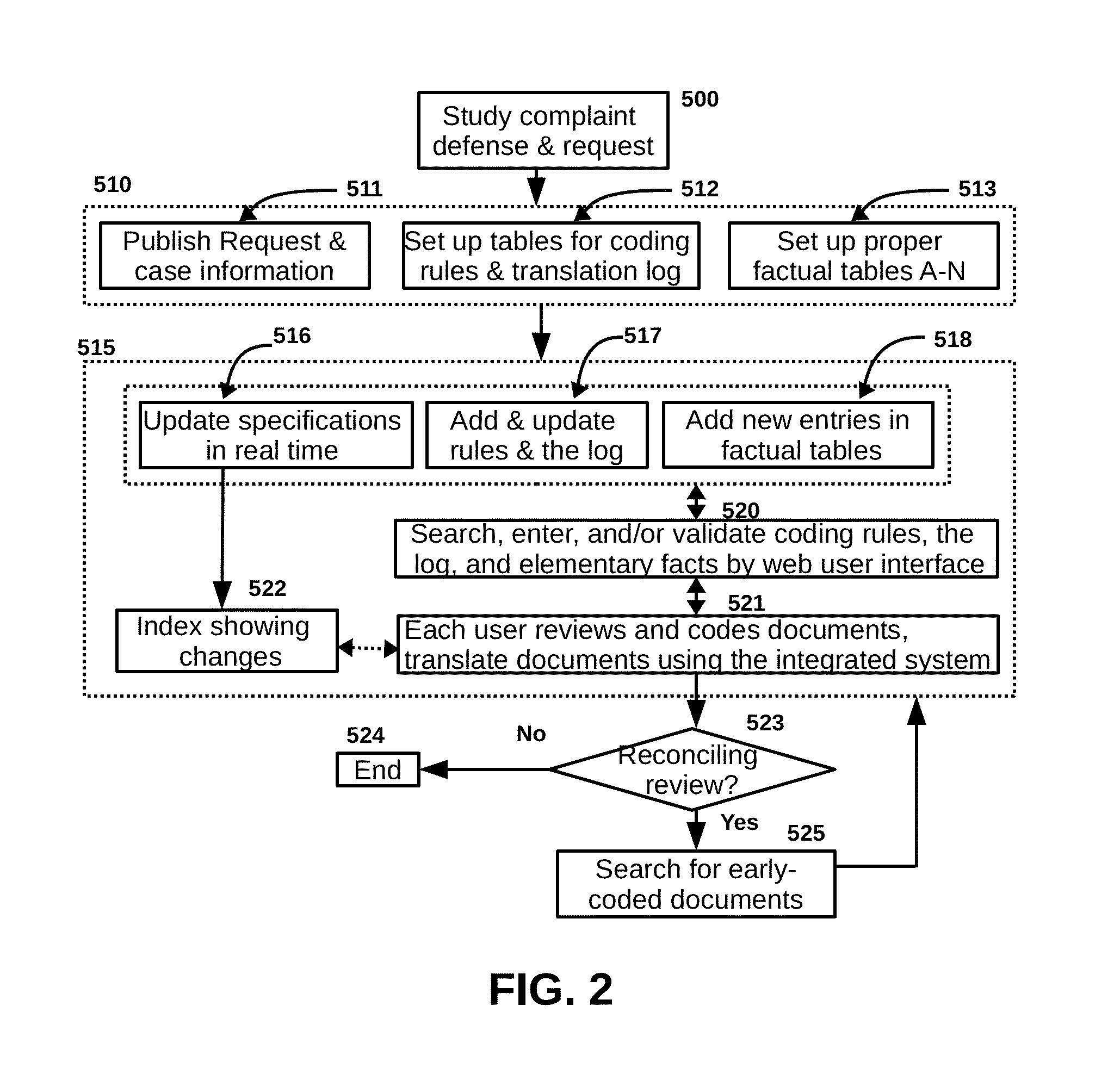Translation Protocol for Large Discovery Projects
a translation protocol and discovery technology, applied in the field of document review methods, can solve the problems of inability to read documents in source language, difficulty in managing work flow, so as to reduce the amount of time, avoid conflicting instructions between litigation attorneys, and minimize the interpretation of the same rules, instructions and guidelines by different reviewers
- Summary
- Abstract
- Description
- Claims
- Application Information
AI Technical Summary
Benefits of technology
Problems solved by technology
Method used
Image
Examples
example 1
Draft Contracts
[0218]The key factor, which is not disclosed in the draft contract, is corporate drafting practice. In some companies, every contract is drafted by legal department, and its legal department is involved in every step from sending model draft, negotiating over terms, reviewing terms, editing drafts, and signing off. In this case, the client can defend a privilege claim by showing its general practice or by specific draft instances even though it may be costly to challenge and defend a privilege claim. In other companies, every draft contract is drafted by a group of well-trained employees. While those people might sometimes seek legal advice, they take care of everything in drafting contract. In this case, the default rule should be non-privileged. In many cases, there might be exceptions. For example, all settlement agreements are drafted by outside attorneys. In this case, the presumption is that draft settlement agreements are privileged.
example 2
Email Sent to Lawyers and Employees
[0219]In determining privilege of email sent to attorneys and employees, one needs to determine if the message is intended for seeking legal advice. When an employee sends a message to five people, it may be for information only. However, it is also possible that the email is sent to solicit a comment. In many cases, one, or several recipients do make comments as to what to do. In some cases, attorneys do respond with legal advice. The communication pattern seems to show that at least for some sensitive matters, the sender seeks advice from both business people and lawyers. In one case, email sent to an attorney and four employees may be coded as not privileged. In another case, email sent to an attorney and fifty employees may be coded as privileged. The communication patterns, the nature of information, and the rankings and roles of the employees play differential roles in the determination of privilege. Those two examples tell why two law firms ...
example 3
Identification of Lawyers
[0257]A reviewer ran into a suspicious lawyer, but could not determine whom the lawyer worked for. A search in the names table returned no record. Thus, the reviewer knew the identity of the suspicious lawyer had not been resolved as of that point. Later, the reviewer saw a retaining agreement. At this point, the reviewer knew who the lawyer worked for and this was a critical fact in determining privilege. The reviewer enters this attorney name in the names table together with native name and the document ID. This newly entered record is a tentative record, but the correct citation of the document ID or control numbers allow other reviewers to validate this elementary fact.
PUM
 Login to View More
Login to View More Abstract
Description
Claims
Application Information
 Login to View More
Login to View More - R&D
- Intellectual Property
- Life Sciences
- Materials
- Tech Scout
- Unparalleled Data Quality
- Higher Quality Content
- 60% Fewer Hallucinations
Browse by: Latest US Patents, China's latest patents, Technical Efficacy Thesaurus, Application Domain, Technology Topic, Popular Technical Reports.
© 2025 PatSnap. All rights reserved.Legal|Privacy policy|Modern Slavery Act Transparency Statement|Sitemap|About US| Contact US: help@patsnap.com



